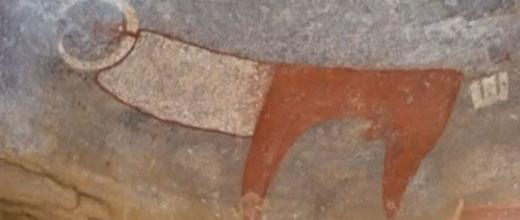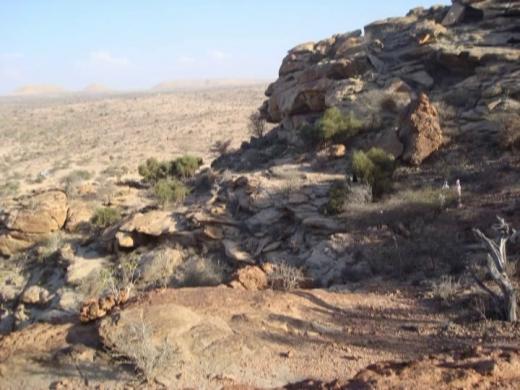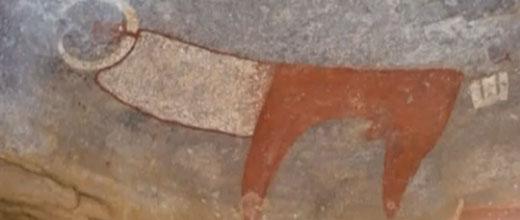Somaliland has few tourist attractions, but the rock paintings at the Laas Gaal cave complex are becoming increasingly popular with local and overseas visitors. Since a team of archaeologists stumbled upon the paintings in 2002, a modest but growing number of tourists have come to explore Laas Gaal. Mohamed Amin Jibril, who lives in Somaliland, shares his experience of visiting the caves, home to some of the earliest known rock art in the Horn of Africa.

Laas Gaal means ‘source of water for camels’ and is located 55 kilometres northeast of Hargeisa, capital of the autonomous region of Somaliland. Local inhabitants have known about the cave paintings for centuries, but their existence was not known to the international community until the French archaeologist Xavier Gutherz and his team ‘discovered’ them on December 4, 2002. Since then, Somaliland’s authorities have made them a protected site and visitors must be accompanied by a guide.
The paintings depict mostly animals, including cows and dogs, but they also show humans. They are estimated to be at least 5,000 years old, dating back to the Neolithic period. Little is known about the civilisation at the time and which painting techniques were used to create the rock art.
The Republic of Somaliland is a collection of administrative regions in northwest Somalia. Its inhabitants declared independence in 1991, but it has not been officially recognised by the international community.
“The number of tourists has doubled in the last year”

Mohamed Amin Jibril is a journalist who lives in Hargeisa, the capital of Somaliland. He went to Laas Gaal on January 24.
Before the French archaeologists found the cave paintings, local belief held that spirits lived in the Laas Gaal caves. In a nearby village, I met 75-year-old Moussa Abdi Jamac, who’s lived in the area since 1969. He told me an old religious chief, Sheikh H. Juma Buh, warned villagers that the spirits didn’t know humans were living close by, and that it was best not to linger in the caves.
Another local told me people living near the caves sacrificed goats in an attempt to pacify the spirits. Today, some villagers continue to believe the Laas Gaal caves are sacred.

There are eight caves altogether. The first is home to the largest number of paintings and is considered the artistic and creative centre of the complex. The second cave is the biggest, and it looks like it may have been used as a meeting room. [Editor’s note: some experts think painted caves in Somaliland could have been meeting points for farmer and herders].
In the third cave, there is a large flat stone which makes you think of a king’s throne. Another cave is partitioned off into smaller spaces with little openings like windows. Prisoners could have been kept here. The rest of the caves look like living quarters.
When you enter the first cave, you see a stunning painting of a cow decorated with what looks like traditional fabrics. Next to the cow, there are paintings of stocky-looking men. The cows have a kind of decorative necklace on their chests. It’s really beautiful. Other animals also appear in the artwork, but these are more rare. [Editor’s note: some paintings show wild animals like jackals, monkeys, elephants, and giraffes].
In the past, no one went to this place. But it’s become the main tourist attraction in Somaliland. An employee at Laas Gaal told me that at first there were only 250 to 300 visitors per year but now there are roughly 30 each week. And according to the Ministry of Tourism, more than 1,000 tourists visited in 2012, double the number of the year before.
SOURCE: France24
























